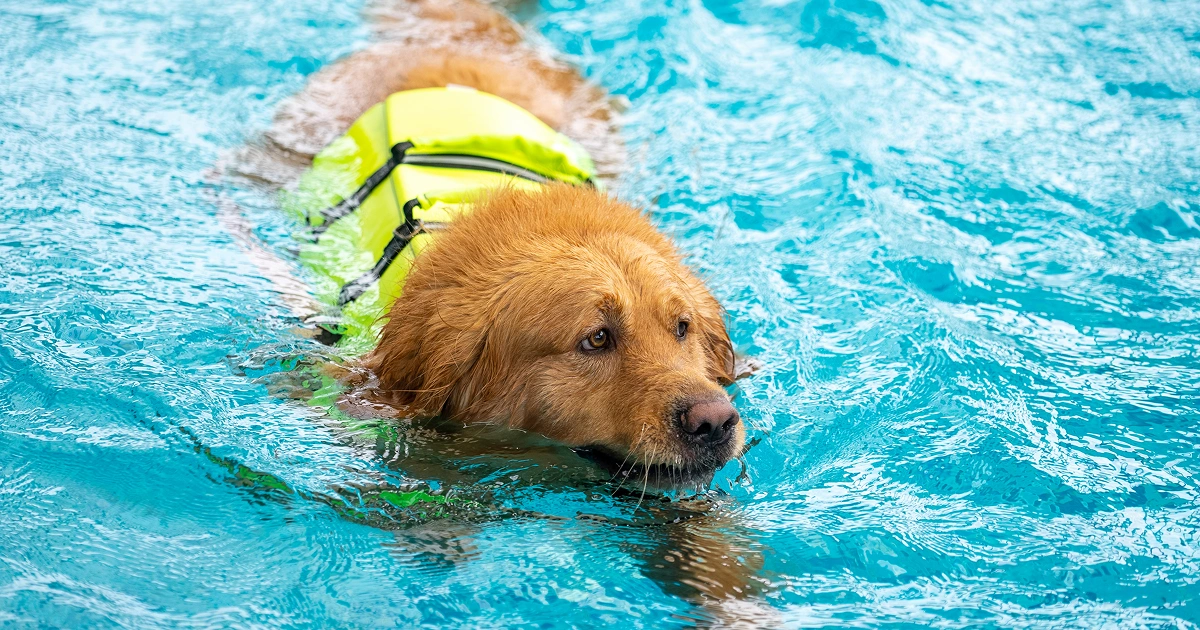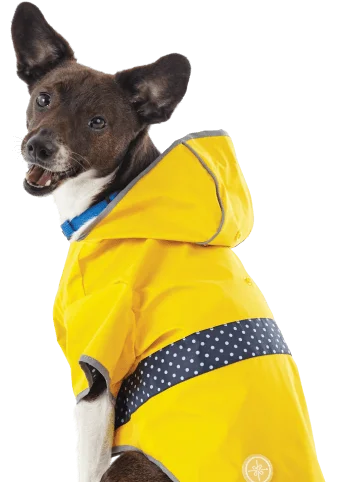
Contrary to popular belief, not all dogs are great swimmers. Some dogs simply aren’t built for the water. While they may have the ability to swim, that doesn’t mean that they enjoy it or are good at it. Other dogs can’t seem to stay away and love a good dip in the pool. In either case, it’s a good idea to practice water safety to protect your pet.
Certain breeds are natural in the water. They have a well-proportioned body, strong legs, and take to swimming easily. This typically includes dogs such as labrador retrievers, golden retrievers, Portuguese water dogs, Spanish water dogs, Newfoundlands, German shepherds, standard poodles, and American and Irish water spaniels.
Other breeds have features that make swimming more difficult. For example:
- Brachycephalic dogs that have flat faces and short snouts can have difficulty keeping their faces out of the water, and it’s easier for them to inhale water up their nose. This can pose a drowning risk.
- Lean dogs with low body fat can have less natural buoyancy.
- Dogs with long bodies and short legs can have trouble swimming and may tire easily.
- Broad-chested dogs have more weight in the front of their body than the back which can throw them off balance in the water and make keeping their head up harder.
- Dogs with long, thick coats can be weighed down by their wet fur, and it can cover their eyes and nose.
This includes dogs such as bulldogs, pugs, corgis, dachshunds, greyhounds, shih tzus, and basset hounds.
Keeping Your Dog Safer in the Water
Before you assume your dog can swim, test their skills. Take them into shallow water and see how they do. Gradually let them swim out where it’s deeper while staying right beside them to assist if they should start to sink or struggle. Even if your dog can swim, they may not enjoy the water and prefer to stay on dry land, so don’t force them in.
Buy a life jacket or life vest to give your dog additional support in the water and help them stay afloat. Practice wearing it on land so they get comfortable with having it on, then move to the water. Pick a floatation device that has a sturdy handle on the top so you can quickly pull your dog out of the water if needed. Make sure your dog wears their life vest when around water, even if they are a good swimmer, because they can become tired quickly in cold or rough water.
If your dog is not a great swimmer or confident in the water, here are some ways you can help:
- Practice swimming while in their life jacket. Use floating toys to keep their interest. Stay close and pay attention in case they struggle or are inhaling too much water.
- Let them swim with a dog who is skilled in the water and can model how to do it. Ideally, your dog will try to mimic what they see. You can also sign them up for doggy swim lessons with a professional.
- Use a kiddie pool so you can control how much water is in it and your dog can still splash around, stay cool, and burn off some energy.
- Secure your dog around water. Keep them close by on their leash if you walk where there are ponds or lakes. If you have a pool, make sure it is fenced in and the gate is firmly latched.
If you’re headed out to the lake or beach this summer and your dog is not a great swimmer or a fan of water, they may not be the best companion. Board your dog at Lake Wylie Pet Resort so they can have their own getaway and play with their furry friends on dry land. Contact us today to book your dog’s stay!




